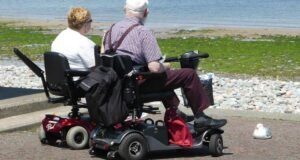Amputation is a life-changing event that requires significant physical, emotional, and psychological adjustments. For individuals undergoing amputation, physiotherapy plays a pivotal role in the recovery process. We will explore how physiotherapy supports post-amputation recovery by improving mobility, strengthening residual limbs, preventing complications, and enhancing overall quality of life.
The journey from amputation to rehabilitation is not only about physical healing but also about regaining independence and confidence. Physiotherapy at https://fixio.com.au/manly-physio/ can provide crucial tools to help patients adapt to their new bodies, rebuild strength, and address any challenges that arise throughout their recovery. By focusing on tailored therapeutic exercises, strategies to adapt to prosthetics, and ways to manage pain, physiotherapy offers a comprehensive approach to support individuals during their recovery.
Contents
Restoring Mobility and Function
A major component of post-amputation recovery is restoring mobility and function to the individual. Physiotherapy plays a key role in helping patients regain their ability to move and perform daily tasks, often by strengthening the remaining muscles and joints. After an amputation, the body undergoes a period of adaptation, and the muscles around the residual limb may weaken due to a lack of movement or use. Physiotherapists create individualized exercise regimens to gradually strengthen these muscles, allowing the person to adjust to walking with or without a prosthetic device. Through targeted exercises, such as stretching, strength training, and balance exercises, physiotherapists work with patients to ensure they can move more freely and safely.
In addition to muscle strengthening, physiotherapy helps to improve the patient’s posture and gait, which can be significantly affected after amputation. For instance, learning to balance and walk with a prosthesis requires retraining the body to distribute weight appropriately. Physiotherapists guide patients through gait training, providing them with the skills necessary to walk in a way that maximizes efficiency, reduces strain on the body, and prevents further injuries. These rehabilitative techniques focus on mobility and restoring independence so individuals can perform daily activities such as walking, climbing stairs, or even participating in sports.
Strengthening the Residual Limb
Strengthening the residual limb, or stump, is an essential aspect of physiotherapy for individuals recovering from an amputation. The residual limb requires specific rehabilitation to ensure its strength and flexibility, which are critical for prosthetic use. Physiotherapists guide patients through exercises designed to increase the residual limb’s muscle tone and enhance its ability to support a prosthetic. This is particularly important in cases where patients are expected to use prosthetic limbs for walking, running, or other weight-bearing activities.
One key objective is to maintain the health and flexibility of the skin around the residual limb to prevent issues like contractures or sores that can arise from improper prosthetic use. Physiotherapists assist in skin care techniques and provide exercises that reduce the risk of these complications. Additionally, they work with patients on techniques to improve blood flow to the residual limb, promoting overall limb health and enhancing comfort when wearing a prosthetic.
Patients are also taught to gradually acclimate to using a prosthetic limb. This process includes learning how to adjust the prosthesis for a proper fit and alignment, which is essential for reducing discomfort and improving walking patterns. Physiotherapists monitor progress and provide adjustments to ensure that the residual limb and prosthesis work together effectively, helping the patient regain functionality.
Preventing Complications and Injuries
After amputation, there are a variety of complications that can arise, including musculoskeletal pain, joint instability, phantom limb sensations, and complications related to the prosthetic. Physiotherapists are essential in preventing these issues from hindering the recovery process. Through early intervention and ongoing rehabilitation, physiotherapists can address potential problems before they become more severe.
For example, phantom limb pain is a common sensation that can occur after amputation and can significantly affect a person’s recovery. Physiotherapists use techniques such as desensitization exercises and mirror therapy to help reduce the intensity of these sensations. These therapies involve visual feedback or gradually introducing touch or pressure to the residual limb, which can help the brain reprocess the sensations associated with the missing limb.
Moreover, physiotherapists educate patients about the importance of joint stability and muscle strength in preventing future injuries. Joint instability is a risk after amputation due to altered walking patterns or compensatory movements. By strengthening the remaining muscles and joints, physiotherapists help patients regain stability and avoid additional strain on unaffected body areas. This proactive approach helps reduce the risk of injury and supports long-term recovery and mobility.
Physiotherapy plays a crucial role in enhancing post-amputation recovery by focusing on restoring mobility, strengthening the residual limb, preventing complications, and improving psychological well-being. Through individualized treatment plans and targeted rehabilitation exercises, physiotherapists help individuals regain independence, reduce the risk of further injury, and promote a higher quality of life. The journey of post-amputation recovery is not only physical but also deeply emotional, and physiotherapy provides invaluable support throughout this transformative process. With the help of physiotherapists, individuals can regain control over their lives, adapt to their new circumstances, and embrace a future filled with possibilities.








